Hi! I'm Khan.
I'm the Principal Narrative Designer here at Deep Silver Dambuster Studios. I've been in the industry for nearly 15 years, as a game designer, game writer, and everything in between. Thanks for joining me!
Follow Khan on Twitter and Linkedin for more insight into the world of narrative design.
[Ayesha Khan, Principal Narrative Designer at Deep Silver Dambuster Studios]
First off: are you in the right place?
What is Narrative Design?
When you imagine doing this job, is it mostly about crafting amazing cutscenes? Beautiful shots of heartfelt dialogue, with characters saying a great deal by speaking a few carefully chosen words? Do you want to make people laugh at the silly things the game's troops say if you click on them enough times?
If so, you probably want to be a game writer. And that’s valid! You should concentrate on building up your writing portfolio, and getting regular game writing work.
But wait, isn't "Narrative Designer" just a pretentious way to say "Game Writer"?
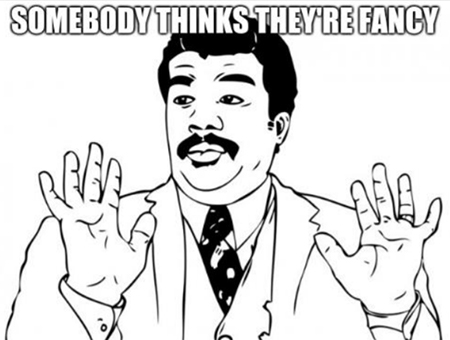
They're related, but the difference is this: A game writer's primary responsibility is to promote the story that the game tells through the scripts they write. Their job is to choose the clearest, highest-quality words they can assemble, and (usually) give them to other devs to be put into the game.
A narrative designer writes too, but our primary job is getting the whole game to tell the same story. We help create it, then coordinate the disciplines in the project to tell it together.
Our most important storytelling tool is not the written word: We use the game's feature set to tell its story.
We need to understand, at least at a high level, all of its features. We must understand (and preferably help create and document) the game as a whole: from core mechanics to level design to cinematics, and everything in between.
Why?
This is a clip of the Heider-Simmel animation.
You can and should Google it for yourselves, but to sum it up: it was created in the 1940s by Marianne Simmel and Fritz Heider to demonstrate a principle called "animacy". It is an animation in which all the pieces' movements are ENTIRELY determined by random chance, but as their accompanying study proved, people who watch it assign motivations, intentions, and personalities to each of the elements.
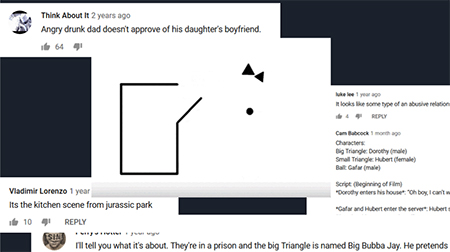
And that's humans! That's what we do. We are all storytellers to some extent. We are very good at looking for patterns; we've been strongly rewarded evolutionarily for finding them, and by now we find them even when they're not there.
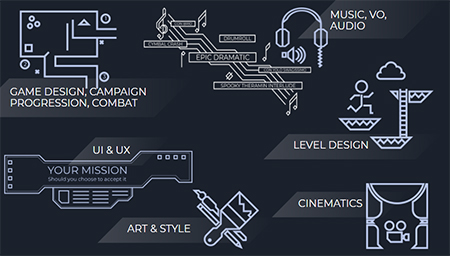
That's why we have to understand the feature set. All of it is gameplay, all of it is narrative, and all of it will combine to tell a story with or without you. Narrative Design is about harnessing all of these forces and getting them to pull in the same direction.
A central part of getting the whole game to tell the same story is preventing the game's story and the player's experience from contradicting each other.
You've all seen ludo-narrative dissonance in some form. If the game's HUD is sci-fi and futuristic,

but the story involves dragons and archers, or if the player mows down 35 henchmen in gameplay to get to a long cutscene about ~THE ANGST~ caused by deciding whether a man lives or dies, or if the music is super tense and dramatic during dull crafting gameplay...
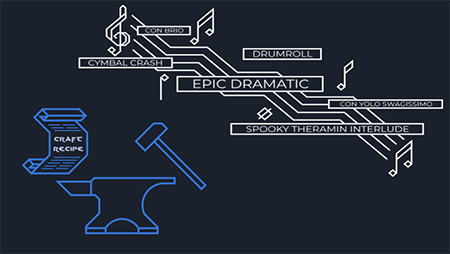
You get the idea.
So that's the theory -- the high-level of what narrative design means. Let's look at what it means in practice, though keep in mind that it will vary wildly depending on the game genre, project structure, studio, and even country.
What is the day-to-day like, as a junior?
An experienced narrative designer should be able to answer all or most of the relevant questions listed below. As a junior ND, you should be gaining the experience that will allow you to answer those questions one day as well.
As is the case with most junior roles, you'll need to master the basics before getting to do a lot of the really fun stuff on a regular basis, in order to really understand down to your bones all the ways in which the different disciplines interact to create narrative.
None of the below is comprehensive, but some typical junior ND responsibilities might include:
Dialogue tools
Wrangling a dialogue system, from data entry all the way through to troubleshooting or bugfixing, is a common requirement. This will allow you to eventually learn the answers to questions like:
- How does a spoken line get into the game?
- Why was one version of a line (a take, or an alt) chosen over another?
- What technical pitfalls await the unwary? (a.k.a. Why do we have to be so cranky about sticking to a file naming convention?)
- What are the steps to calling a line "done" and in-game, and roughly how long should one estimate for each one? (Including, for example, post-processing by the Audio team.)
Working in the game's editor (Unreal, Unity, etc) to add, modify, or remove narrative elements such as NPCs, what available animations they are using, monsters/enemies, path maps, quest objectives, events or dialogue and their triggers...Remember, almost anything could be considered a narrative element (on smaller teams, maybe even down to the lighting!) because everything can affect what story the game is telling and how it's being told.
Working in the editor
On Day 1, I'd expect a junior to have some experience in an editor so that I wouldn't need to teach them the basics of how to navigate one, but I would also expect to need to teach them a fair bit about how to go about their tasks and how our project was organised.
Getting your hands regularly dirty in the editor will allow you to eventually answer questions like:
- What unused or underused storytelling vehicles are available to us through the editor?
- How can I get this NPC to convey a specific emotion if I don't have that specific animation in my toolbox?
- How should I space out my content to create the pacing I want?
- What do I need to consider to make non-linear storytelling still feel like a coherent narrative and not a bunch of disjointed vignettes?
Creative writing
Brainstorming, writing, editing, and workshopping text! Dialogue scripts, combat barks, scripts for cutscenes, UI text, website text, marketing copy, in-game audio and text props... Some projects have full-time game writers in their team handling all of this, some outsource the cinematic cutscenes and write the rest in-house, and some have narrative designers doing all the writing.
On Day 1, I'd expect a junior ND to have an excellent grasp of English (or whatever the game's language is) grammar and spelling, and a talent or at least enthusiasm for creative writing. This is a job for word nerds. And yet, strangely, unlike a game writer, a narrative designer's aim is often to remove as many spoken or written words from the game as possible: unless the project is a visual novel or similar genre, we want to convey our message through as few interruptions to the gameplay as possible, breaking the player's immersion and taking away their agency as little as possible.
- How can I convey the same idea or emotion in fewer words?
- Can our tech handle conveying the desired information through a look instead of a line?
- Who are the stakeholders here, and how will their feedback be integrated into this script?
- How can I reinforce this message through gameplay?
- Does this scene contradict the gameplay, or the game's themes?
Technical writing
Documentation! I can't stress enough how vital clear documentation of features is to a project's success.
A junior ND will need to learn how to write clear, concise technical documentation of game features, always with the document's audience in mind (it is a truism, for example, that artists don't like to read a lot of text).
- Which other teams' work will this feature affect?
- What does Art need to know about this quest or level?
- What does the casting agency or sound engineer need to know about this recording session?
Localisation
You may end up wrangling parts of the localisation process, again from data entry through to script annotation to glossary maintenance to formalising descriptions or bios of features or characters already in the game.
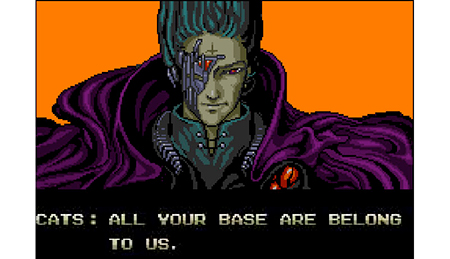
- How does ND help ensure good translations?
- What kind of annotations to the various kinds of script will translators need?
- What goes into a localisation kit, especially a glossary?
- What are the common technical pitfalls to avoid with regards to font choices, text string composition (especially regarding item names), baked-in text, etc?
Organisation
Organising yourself and your tasks, keeping your progress transparent to your lead(s) and producer(s), asking for help when you don't understand a task or don't know how to complete it, and creating time estimates for the work you’re assigned: all are essential.
The latter has a universal cheat, by the way: time yourself doing a task the first time, then double or even triple that for your official estimates going forward. No-one resents work being completed faster than expected, but vice versa can cause problems. Time yourself again to update these estimates once every few months as a junior, then once or twice a year for the rest of your career. Your name will be blessed by your production team.
Championing the vision
Playtesting, bugfixing, incorporating or giving feedback, and keeping an ever-watchful eye out for ludo-narrative dissonance.
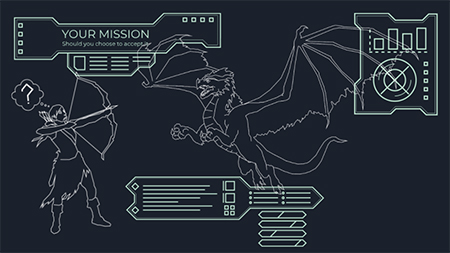
[“Well, someone got the wrong address!”]
It's hard to be definitive, because depending on studio and project, there can be a lot more OR a lot less to the day-to-day life of a narrative designer.
The real takeaway is to try and understand what problems you're there to solve and for whom; as is the case with writing, narrative design is all about the audience.
If you've come this far and you're still interested in Narrative Design as a potential career path, then stay tuned for Part 2, coming later in November. Khan, Principal Narrative Designer, will touch on what that career path could look like, and how to get into the field.




